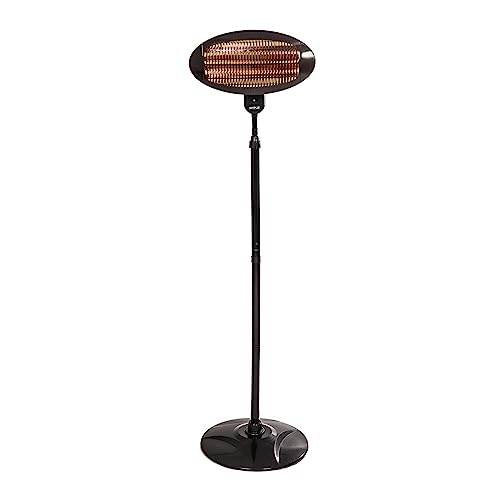How to Choose donyer power electric patio heater
When you want to heat your patio, you've got many options. In contrast to propane models that require refills, electric heaters can deliver instant heat by flicking the switch or pressing the button.
They also don't release gasses that might pose a health risk. Some units have adjustable heat settings to allow for different distances.
Type of Heater
You can relax outside all through the evening and throughout the year by using the right patio heater. Patio heaters are available in many different types including freestanding propane models, natural gas models and ceiling or wall-mounted electric radiant heaters. The choice you make will depend on the dimensions of your space, your power source and personal preference.
The majority of patio heaters utilize electricity, natural or liquid gas to generate heat. They emit heat via convection heating as well as radiant heating. The heat output of patio heaters is measured in watts, which can be converted into British thermal units (BTUs) to give a comparative. Some models can be adjusted in temperatures to allow more flexibility.
Patio heat lamps incorporate an electric burner on a pole with an open-pored screen that reflects flames and sends heat downwards to warm people, objects and furniture. Some models have a reflector above the burner, which can be silvered to cut down the amount of heat lost upwards.
Gas patio heaters are among the most common patio heaters. They are able to heat multiple tables quickly and evenly. These heaters are portable and can run on a propane tank, or they can be plumbed in to your natural gas line. The latter is more convenient and comes with lower initial costs, but requires fuel.

Gas patio heaters are becoming more popular as more houses have natural gas lines. They are simple to install, but they require a gas line that's properly installed and functioning to be safe. There are portable natural gas heaters equipped with extension hoses which can help overcome this restriction however they can also create a tripping hazard and an additional fire danger when not being used.
Safety
Electric patio heaters can be used safely in enclosed areas, since they permit heat to radiate upwards and not outward. They are not designed to be used under a non-protected roof. The heater should be placed at least 6" away from the ceiling and 18" away from the adjacent wall to avoid fire hazards.
The propane and gas patio heaters can only be used in enclosed areas that have durable covers designed for outdoor use. The covers are typically made of fire-resistant fabrics and have an open roof that can be closed. The safety issues with these types of outdoor patio heaters are related to the fumes and flames they produce. They should be kept away from flammable objects, such as curtains and chairs.
When installing an electric patio heat lamp or any other patio heater, always follow the manufacturer's instructions and safety precautions carefully. Be sure to select the one with UL and CSA certifications, and read the owner's guide thoroughly. Be sure that the heater is not within reach of children and pets. Some patio heaters that are freestanding such as EUROM's have an automatic tipping safety that shuts down the device in the event of a fall.
If your patio heater is connected to a natural gas line, it is recommended to examine it regularly and have it tested by a qualified professional for leaks. If the line needs to be replaced get it replaced by an expert plumber who is licensed. A professional will be able to determine if the line has been properly routed or should be run through an underground pipe. A professional will also be able to ensure that the heater for your patio is connected to an outlet that is GFCI-rated (ground fault circuit interruptioner) to protect against electric sparks and fires.
Installation
The size of the patio heater is placed affects the amount of heat it can radiate into the space. It is important that the heater is placed at an appropriate distance from any surfaces like plastic that can deform, and wood, which can become too hot. Depending on the model of the heater you can decide to mount it on a wall or structure using traditional mounting brackets. Certain models have a soft starter that reduces the peak current to protect your circuits.
